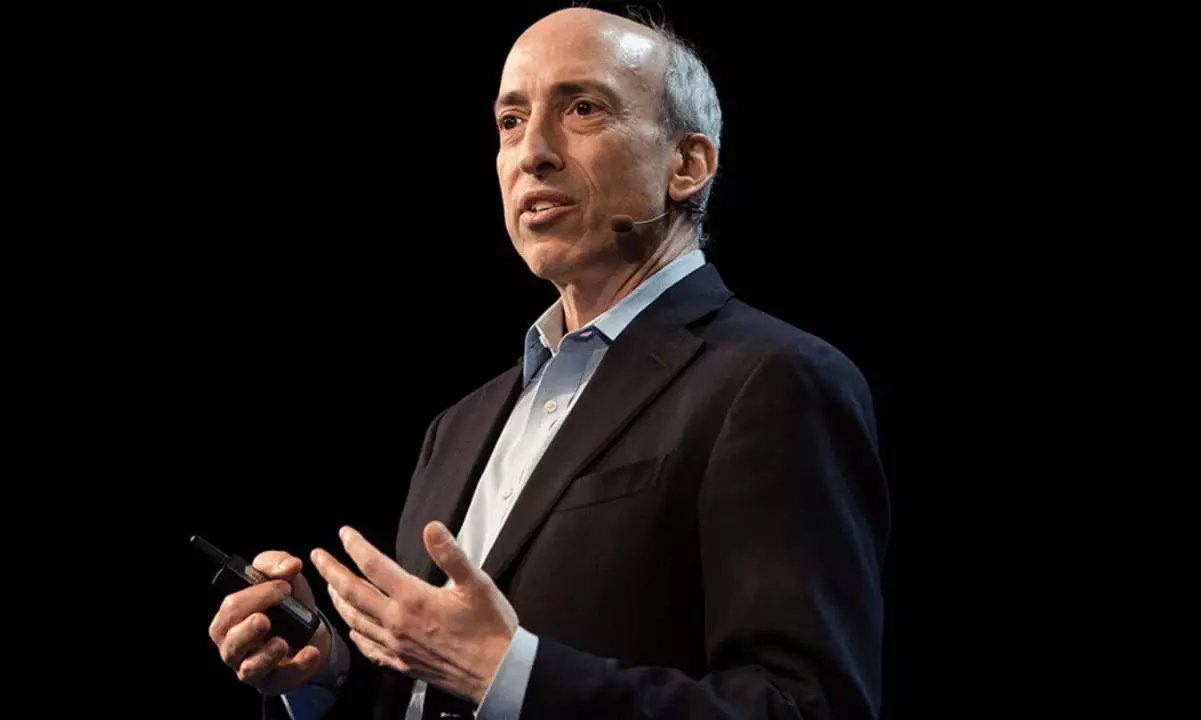The cryptocurrency landscape is an enigma wrapped in volatility, excitement, and danger. Former SEC Chair Gary Gensler’s recently expressed concerns shed light on a vital issue: the overwhelming influence of market sentiment over foundational principles in crypto. This skewed balance can lead to wild fluctuations, leaving many investors at the mercy of whims rather than solid indicators. Gensler’s cautionary stance provides clarity about what has been an increasingly mystifying market, but it also raises critical questions about the future of digital currencies.
The Sentiment Overload: A Recipe for Disaster
At the core of Gensler’s critique is a central truth: most digital assets thrive on a wave of sentiment rather than concrete fundamentals. In financial markets, the idea that emotions can dictate value isn’t new, but Gensler suggests an alarming reality. If, as he posits, 99% of the crypto market is fueled by sentiment, this makes the sector extraordinarily precarious. Should a widespread wave of skepticism sweep through, entire ecosystems can collapse overnight, leaving countless individuals nursing significant financial wounds. The essential lesson here is that investing in cryptocurrency without understanding the underlying principles is akin to setting sail without a compass.
The phenomenon of “meme tokens” and sentiment-driven assets reflects humanity’s whimsy rather than a calculated investment strategy. Gensler’s assertion that markets oversaturated with “ten or 15,000” tokens are unlikely to captivate long-term interest strikes a chord. The question arises: are investors truly prepared to navigate such a turbulent emotional landscape? The answer may very well dictate the future of their fortunes.
The Safety of Bitcoin: An Island Amidst Chaos
Interestingly, Gensler does carve out a distinction between Bitcoin (BTC) and the rest of the digital currency crowd. He posits that Bitcoin may persist in the long term due to its unlike-any-other appeal—its foundation as a digital gold. As people across the globe show affinity toward it, Bitcoin solidifies its place not just among cryptocurrency but in the broader financial landscape. This highlights a fundamental reality: in a sea of sentiment-focused coins, Bitcoin stands as a beacon of something more substantial.
In the financial world, gold has long enjoyed the status of a safe haven. Gensler’s analogy serves to emphasize Bitcoin’s potential resiliency, suggesting its appeal will continue, even as its less substantial counterparts flounder. Investors seeking refuge from the emotional turmoil that dominates other cryptocurrencies may want to consider this potential safety net.
Inevitability of Market Volatility: A Lesson from U.S.-China Relations
But volatility isn’t confined to the crypto market; it permeates global trade dynamics as well, particularly between the U.S. and China. Gensler’s observations about the intertwined nature of financial markets and tariff issues add another layer of complexity. As digital asset investment products recently experienced an exodus nearing $800 million amidst tariff disputes, it’s clear that external policy uncertainties influence crypto investments profoundly.
The intricate dance of international relations underscores how deeply interconnected our financial ecosystems truly are. During periods of political stability, investors may feel more secure, but the current geopolitical climate may usher in a new era of unpredictability that impinges upon market performance. The lesson here is double-edged: while navigating sentiment-driven decisions in crypto, investors cannot afford to ignore macroeconomic factors beyond their immediate grasp.
AI—Crypto’s Most Transformative Ally, or Potential Foe?
Turning the lens toward the future, Gensler’s reflections on the integration of Artificial Intelligence (AI) in financial trading highlight the technology’s transformative potential. This intersection of crypto and AI could spell both promise and peril. Gensler notes that AI will radically reshape finance within the next five to twelve years. However, he also emphasizes that until AI achieves speed suitable for high-frequency trading, its impact remains muted.
The juxtaposition between technological innovation and the entrenched emotion-driven forces of the crypto market paints a nuanced picture. Could AI, in its relentless pursuit of data-driven analysis, help mitigate the sentiment overload that currently threatens the market’s stability? While the actuality remains uncertain, the implications of this union warrant serious contemplation. As we advance into an era marked by AI’s influence, the fundamentals of finance may finally provide a counterbalance to the erratic swings of market sentiment, creating a new paradigm that seasoned investors can navigate more confidently.
In this rapidly evolving landscape, the lessons learned from both Gensler’s cautions and the prevailing sentiments must inform our strategies as traders and investors alike. Are we ready to confront these truths? Only time will tell.















